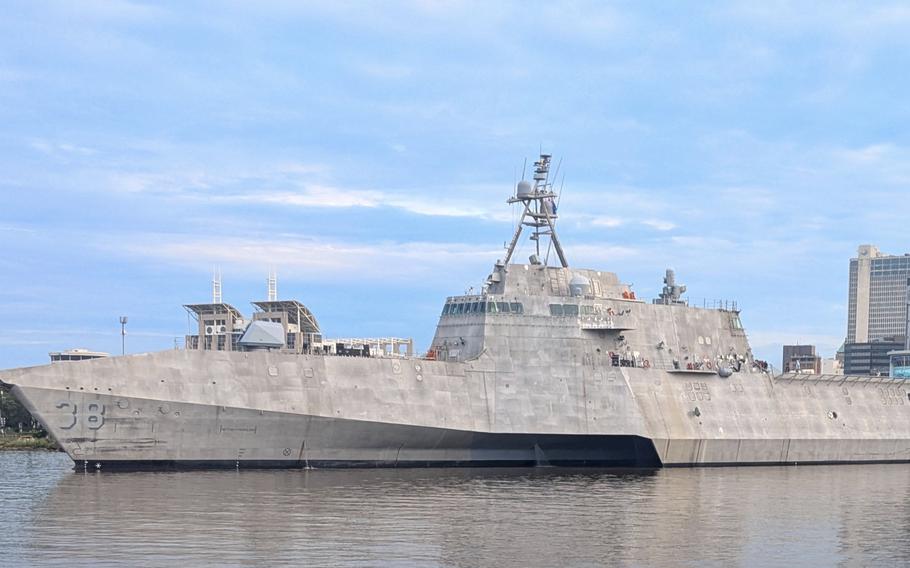
USS Pierre departs Austal USA shipyard to conduct acceptance trials in Mobile, Ala., in June 2025. The Navy said on June 23, 2025, that the Independence-class littoral combat ship had completed sea trials. (Amanda Helfers/U.S. Navy)
The Navy’s last Independence-class littoral combat ship successfully completed sea trials this month, a bittersweet milestone for a group of vessels that were once planned to be a bigger part of the service’s future.
USS Pierre, the 19th vessel of its class, returned to Mobile, Ala., in early June after completing comprehensive testing of its major systems and equipment, Naval Sea Systems Command said in a June 23 statement.
The ship will be commissioned this fall and homeported in San Diego, supporting security, sea control and deterrence operations, the Navy said.
The achievement marked the close of an important chapter in U.S. shipbuilding history, with the story of the littoral combat ship still being written by sailors, Jonas Brown, deputy program manager of the LCS Program Office, said in the statement.
Littoral combat ships are fast, nimble vessels prized for their abilities in coastal areas and the open ocean.
In the early 2000s, shipbuilders developed two variants, Independence and Freedom, each capable of surface warfare and mine hunting. The ships have different hulls and are designed and built by separate shipbuilders.
At one point, the Navy planned to have the ships make up about one-sixth of the service’s oceangoing fleet.
But the Independence variant suffered costly setbacks and delays, including cracked hulls and propulsion issues.
The USS Independence, the first ship in the class, joined the active fleet in 2010 and was decommissioned in 2021. The USS Coronado was decommissioned in 2022 after about eight years of service.
Upgrading the two ships, along with the first two Freedom-class variants, was considered too costly, Navy officials said at the time.
About 17 Independence-class vessels are active.
The Freedom variant also was plagued by propulsion problems and other costly issues. As a result, the Navy in 2022 proposed mothballing nine Freedom-class ships well ahead of their end-of-service dates. Ultimately, five of the ships were saved.
About 10 Freedom-class ships remain in service, according to the Navy’s website. The variant’s final vessel, USS Cleveland, is planned to be commissioned this fall, according to usscleveland.org.
The service now is prioritizing production of the Constellation-class frigate, which it says delivers a more powerful punch.
But with the aging Avenger-class minesweepers nearing retirement, the Navy recently designated at least three Independence-class ships — USS Canberra, USS Tulsa and USS Santa Barbara — to be homeported in Bahrain.
The ships are the first Independence-class vessels to be outfitted with mine-hunting capabilities, including surface drones, Naval News reported in April.
Canberra arrived in the Middle East in May. Santa Barbara and Tulsa are expected to deploy to the region later this year, USNI News reported on June 23.
No Freedom-class variants are expected to be outfitted with mine-hunting capabilities, according to Naval News.
Pierre is named in honor of the South Dakota capital and is the second U.S. Navy warship to bear the name, the Navy said.
The ship “is not just the final LCS in its class; it’s a symbol of our Navy’s strength, lethality, and commitment to global security,” Melissa Kirkendall, acting program executive officer for unmanned and small combatants, said in the statement.